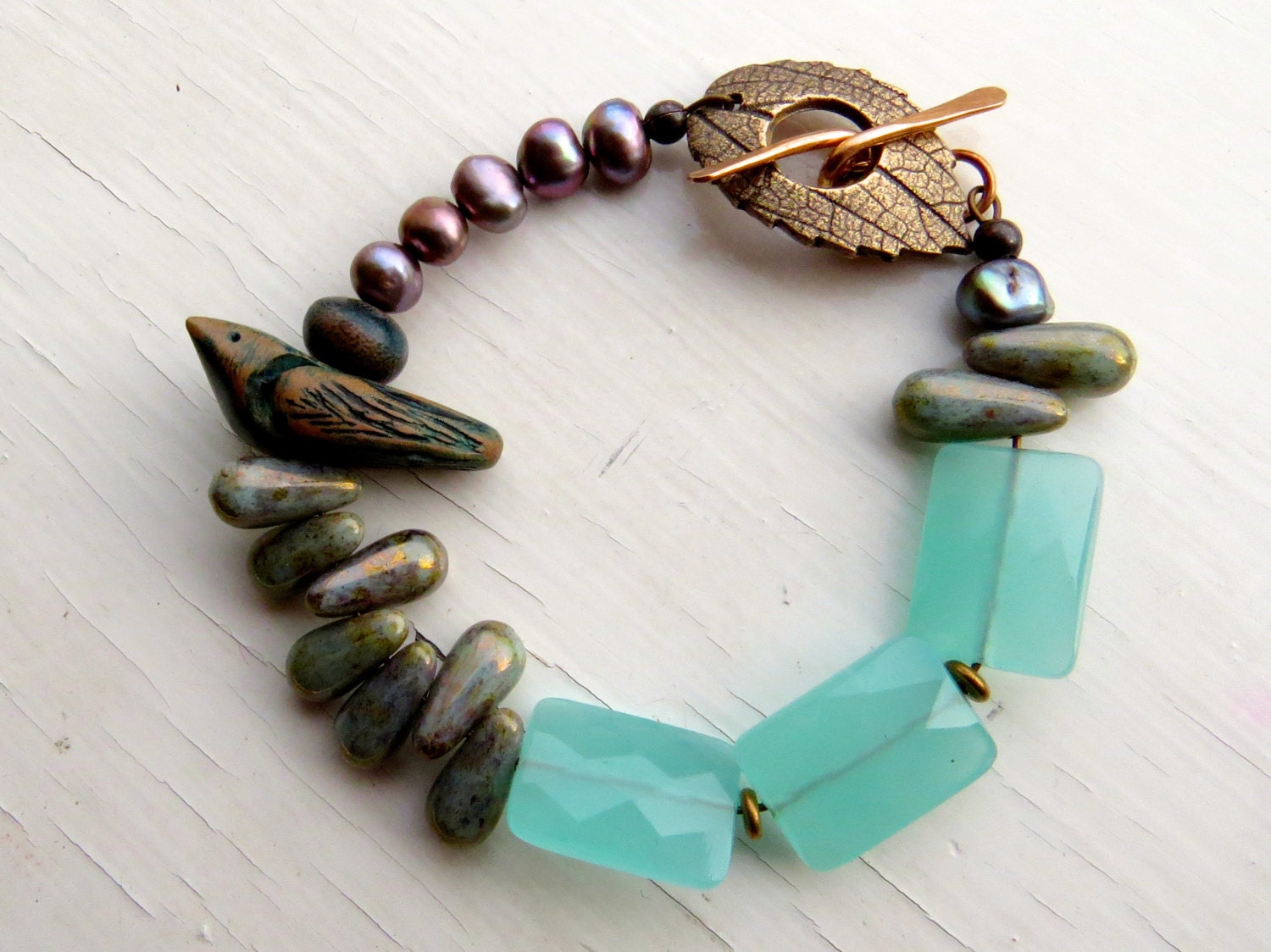 |
| by Barbara Bechtel |
First, let's discuss symmetry and asymmetry. In my opinion, people often think of symmetry as balanced and asymmetry as imbalanced, but this is incorrect. Both aspects, when used in a dynamic and skillful way can lead to balance and this is one of the keys to proper design.
Think of the human face. Generally speaking, our faces are symmetrical. When divided by a center line, they are like halves that make up a hole.
Now if we add in hair, which can be styled in various ways, often parted on one side, we can add an element of asymmetry to the appearance. The balance is not disturbed because design is often taken into account when styling and cutting the hair as a whole. A skilled stylist will take into account the shape of face and head, the volume and natural way a person's hair grows to make a style that could very well be asymmetrical but also balanced.
To me, whenever people seem stumped with coming up with a interesting asymmetrical design, it often appears in necklaces (could have something to do with it being worn on an area of the body that divides the natural symmetry of the human form?)
 |
| Rebecca Anderson of Songbead regularly uses beautiful asymmetry in her bracelet designs. |
1) Stop thinking of necklaces as necklaces.It always seems natural to design necklaces symmetrically. Part of that has to do with the weight of the necklace being distributed in an even fashion so it wears correctly. Instead, try thinking of your piece not as a necklace, but perhaps as a bracelet. I regularly see more asymmetrical ideas in bracelets that could easily translate into interesting and compelling necklace designs.
 |
| An uneven number of these lovely turquoise beads led me to make this design that clasps on the side. |
2) Don't design based on a "focal". Rather than beginning a necklace design by selecting a focal element, design from a different part first. Select a beautiful clasp or some beautiful beads you've been struggling to use, and challenge yourself to place them in an area of the necklace you wouldn't ordinarily i.e. putting the clasp on the side or using a interestingly detailed bead in another area first before you think about the main part of the necklace.
 |
| This piece started with trying to find a way to use the watchmaker's tin and the section of spoon handle on the left. |
 |
| Designed as a variation of an example for a tutorial by Lori Anderson, this piece combines several different sections of waxed linen combined with lots of tiny elements that create a flowing cohesive asymmetrical design. |
Do you have any favorite tips on asymmetry to share? We'd love to hear them in the comments!
No comments:
Post a Comment